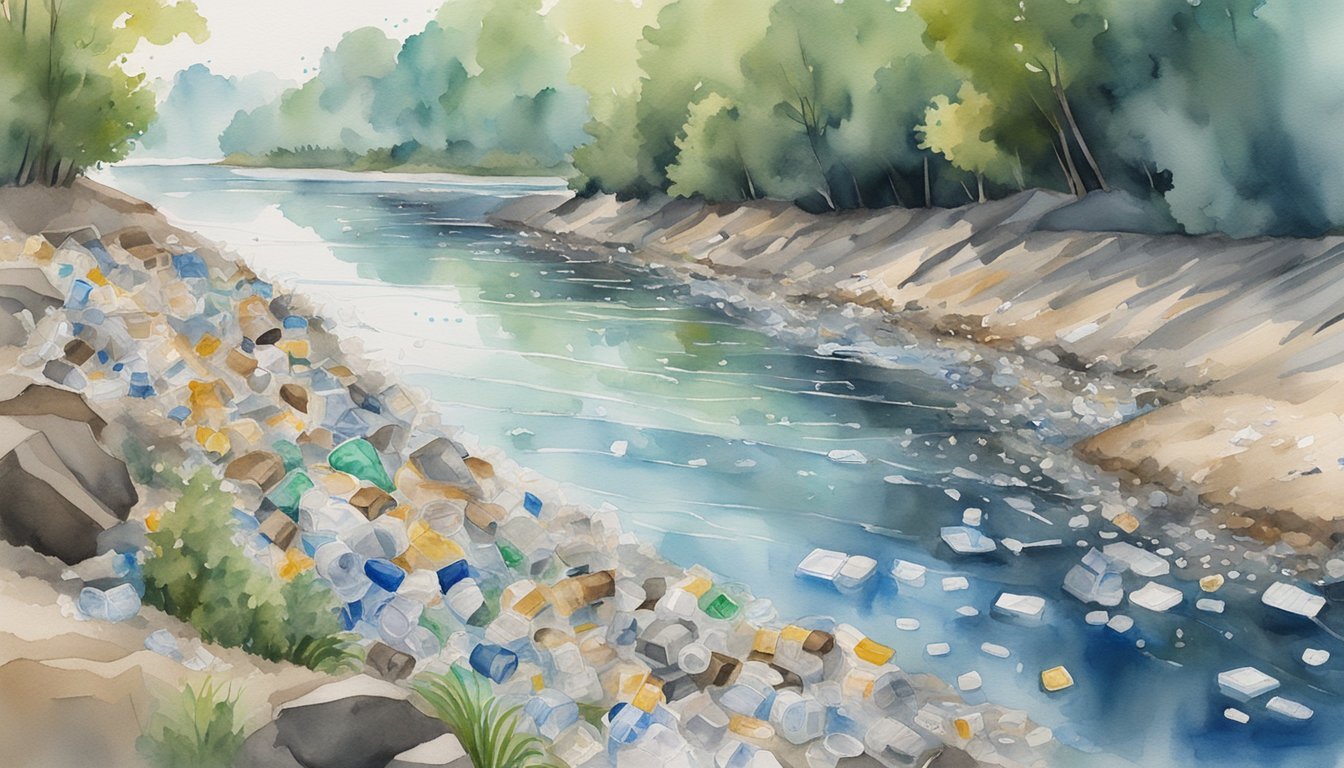Understanding Microplastics
Definition and Sources
Microplastics are tiny plastic particles less than five millimeters in size, ranging from the diameter of a grain of rice to so small that they need to be seen under a microscope1. They are classified into two categories: primary and secondary microplastics. Primary microplastics are intentionally manufactured for various purposes such as microbeads in personal care products, whereas secondary microplastics are formed when larger plastic items degrade in the environment2.
Prevalence in Nature
Microplastics are now ubiquitous in our environment and have been found in various ecosystems, including oceans, waterways, and soil. Recent research and databases like NCEI’s Marine Microplastics Database have helped create a unified understanding of the global microplastic problem by providing extensive data on their distribution at the ocean surface, at depth, in sediments, and on beaches.
Impact on Marine Life
Microplastics pose a significant threat to marine life, including birds, fish, and plankton. Studies have shown that ingestion of microplastics can cause detrimental effects on a wide variety of organs, including the intestine, lungs, liver, as well as the reproductive and nervous systems in rodents3. Additionally, smaller and fiber-shaped microplastics have been found to be generally more toxic, with the severity of impacts related to exposure duration and mode of action4.
Microplastics in the Food Web
Unfortunately, microplastics have also entered the food web as marine organisms consume them, either directly or indirectly. For example, plankton, which are primary consumers in marine ecosystems, can inadvertently ingest microplastics. These are then passed on to higher trophic levels as predators consume plankton, eventually reaching humans as seafood consumers. This highlights the growing importance of understanding the long-term ecological and health consequences of microplastics in our environment5.
Mitigation and Prevention Strategies

Roles of Governments and Organizations
Governments and organizations play a crucial role in mitigating microplastic pollution and implementing prevention strategies. Regulatory measures such as banning single-use plastics can significantly reduce the amount of plastic waste entering the environment. The United Nations Environment Programme emphasizes the importance of adopting a circular economy approach to address this issue. This approach prioritizes reducing plastic production, reusing existing materials, and recycling waste to decrease detrimental effects on our ecosystem.
In the United States, the Microbead-Free Waters Act was implemented to ban the use of microbeads found in cosmetics and personal care products. This legislation has encouraged similar bans in other countries, highlighting the effectiveness of government intervention in reducing microplastic pollution.
Innovative Solutions and Initiatives
There are numerous innovative solutions and initiatives being developed to address the issue. Scientists are constantly researching ways to remove microplastics from the environment or finding methods to convert them into less harmful nanostructures. Recent technologies have focused on capturing and filtering microplastics from water sources before they reach larger ecosystems.
Public and private sectors are also collaborating on initiatives to create a more sustainable future. For instance, the United Nations is partnering with governments, industries, and non-governmental organizations to raise awareness, improve waste management, and invest in eco-friendly alternatives to conventional plastic materials.
Consumer Choices and Lifestyle Changes
Individuals can also contribute to microplastic prevention and mitigation by making conscious lifestyle changes. Opting for sustainable and plastic-free items wherever possible can drastically reduce our overall plastic consumption. Here are some tips to help minimize plastic waste:
- Choose reusable bags, bottles, and containers instead of single-use plastic versions
- Use eco-friendly personal care products that do not contain microbeads
- Support companies and businesses that prioritize sustainability and environmentally-friendly practices
In conclusion, a combination of government regulations, innovative solutions, and informed consumer choices is essential in confronting the challenges posed by microplastic pollution. By working together, we can create a cleaner, safer, and more sustainable environment for future generations.

